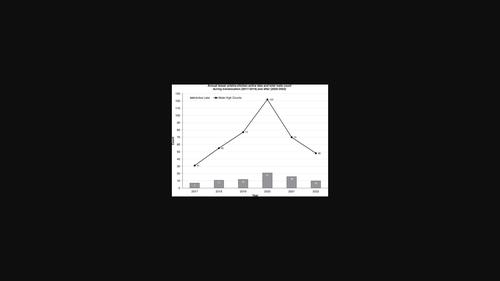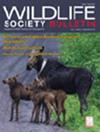通过生存和韭葱调查评估小草原鸡易位
IF 1.5
4区 环境科学与生态学
Q3 Environmental Science
引用次数: 0
摘要
易位是一种用于恢复或增加野生动物种群的管理工具,但易位的结果往往缺乏文献记录,并且在改善野生动物种群下降方面可以取得不同程度的成功。小草原鸡(Tympanuchus pallidicinctus)是大平原南部特有的草原松鸡。为了应对数量和分布的下降,2023年,美国不同州根据《濒危物种法》将小草原鸡列为受威胁或濒危物种。当存在可获得的空置栖息地时,易位是应对种群减少的一种潜在管理措施,但尚未对小草原鸡的易位效果进行评估。我们从2016年至2019年季节性迁移了411只小草原鸡,并从2017年至2022年监测了迁移的小草原鸡种群。为了评估易位作为小草原鸡的管理工具,我们估计了2017-2020年的存活率,并在2017-2022年进行了lek调查。超过五分之一(22.8%,n = 94)的转移鸟类在释放后的前两周内死亡或失踪。在其他研究中,易地鸡在繁殖期的存活率(0.44±0.02 [SE])和非繁殖期的存活率(0.55±0.03 [SE])均低于非易地鸡(繁殖期的存活率为0.63-0.93;非繁殖季节为0.43-0.87)。27%的迁移鸟类在释放后存活到繁殖季节(即1年)。迁移的小草原鸡在研究期间引发了28个渗漏点。我们估计77%的男性在释放后2周参与了泄漏活动。易位后,研究区域的鳞片数量和雄性鳞片高计数均有所增加,在易位后一年达到峰值(总体增幅分别为250%和340%)。然而,在易位停止后的3年内,leks数量和男性高计数分别下降了48%和39%。在易位后直接建立渗漏和增加渗漏率最初表明,易位可能是一种可行的管理工具。然而,易位后的存活率和易位后的渗漏计数下降表明,这种易位努力增加的种群丰度和占据的范围可能是不可持续的。我们的研究结果强调了监测的必要性,以确定大型小草原鸡易位的结果。其他管理策略,如有针对性的草地恢复和小草原鸡密度最大地区的管理,可能更有利于小草原鸡种群的保护。本文章由计算机程序翻译,如有差异,请以英文原文为准。

Assessment of lesser prairie‐chicken translocation through survival and lek surveys
Abstract Translocation is a management tool used to restore or augment wildlife populations, but outcomes of translocations are often poorly documented and can have varying levels of success for improving wildlife population declines. The lesser prairie‐chicken ( Tympanuchus pallidicinctus ) is a prairie grouse endemic to the southern Great Plains. In response to declining abundance and distribution, in 2023 lesser prairie‐chickens were listed as threatened or endangered under the Endangered Species Act in different states. Translocation is a potential management response to population declines when there is an availability of unoccupied habitats, but translocation efficacy has not been evaluated for lesser prairie‐chickens. We translocated 411 lesser prairie‐chickens seasonally from 2016‐2019 and monitored the translocated lesser prairie‐chicken population from 2017–2022. To assess translocation as a management tool for lesser prairie‐chickens, we estimated survival for 2017–2020 and conducted lek surveys during 2017–2022. Over a fifth (22.8%, n = 94) of translocated birds either died or went missing within the first 2 weeks following release. Survival rates of translocated birds during the breeding (0.44 ± 0.02 [SE]) and nonbreeding (0.55 ± 0.03 [SE]) seasons were relatively low compared to nontranslocated lesser prairie‐chickens in other studies (0.63–0.93 for breeding season; 0.43–0.87 for non‐breeding season). Twenty‐seven percent of translocated birds survived to the breeding season after release (i.e., >1 year). Translocated lesser prairie‐chickens initiated 28 lekking sites over the study period. We estimated 77% of males available >2 weeks post release participated in lekking activity. The number of leks and male high counts on leks in the study area increased after translocation, peaking one year post‐translocation (an overall increase of 250% and 340%, respectively). However, both the number of leks and male high counts decreased (48% and 39%, respectively) within 3 years after translocation cessation. Establishment of leks and increasing lek attendance directly following translocation initially suggested that translocation could be a viable management tool. However, survival rates after translocation and declining lek counts following translocation indicates that the increased population abundance and occupied range from this translocation effort may be unsustainable. Our results highlight the necessity of monitoring to determine outcomes of a large lesser prairie‐chicken translocation. Other management strategies, such as targeted grassland restoration and management in areas of greatest lesser prairie‐chicken density, could be more beneficial for conservation of lesser prairie‐chicken populations.
求助全文
通过发布文献求助,成功后即可免费获取论文全文。
去求助
来源期刊

Wildlife Society Bulletin
BIODIVERSITY CONSERVATION-
CiteScore
2.10
自引率
13.30%
发文量
0
期刊介绍:
The Wildlife Society Bulletin is a journal for wildlife practitioners that effectively integrates cutting edge science with management and conservation, and also covers important policy issues, particularly those that focus on the integration of science and policy. Wildlife Society Bulletin includes articles on contemporary wildlife management and conservation, education, administration, law enforcement, and review articles on the philosophy and history of wildlife management and conservation. This includes:
Reports on practices designed to achieve wildlife management or conservation goals.
Presentation of new techniques or evaluation of techniques for studying or managing wildlife.
Retrospective analyses of wildlife management and conservation programs, including the reasons for success or failure.
Analyses or reports of wildlife policies, regulations, education, administration, law enforcement.
Review articles on the philosophy and history of wildlife management and conservation. as well as other pertinent topics that are deemed more appropriate for the Wildlife Society Bulletin than for The Journal of Wildlife Management.
Book reviews that focus on applied research, policy or wildlife management and conservation.
 求助内容:
求助内容: 应助结果提醒方式:
应助结果提醒方式:


